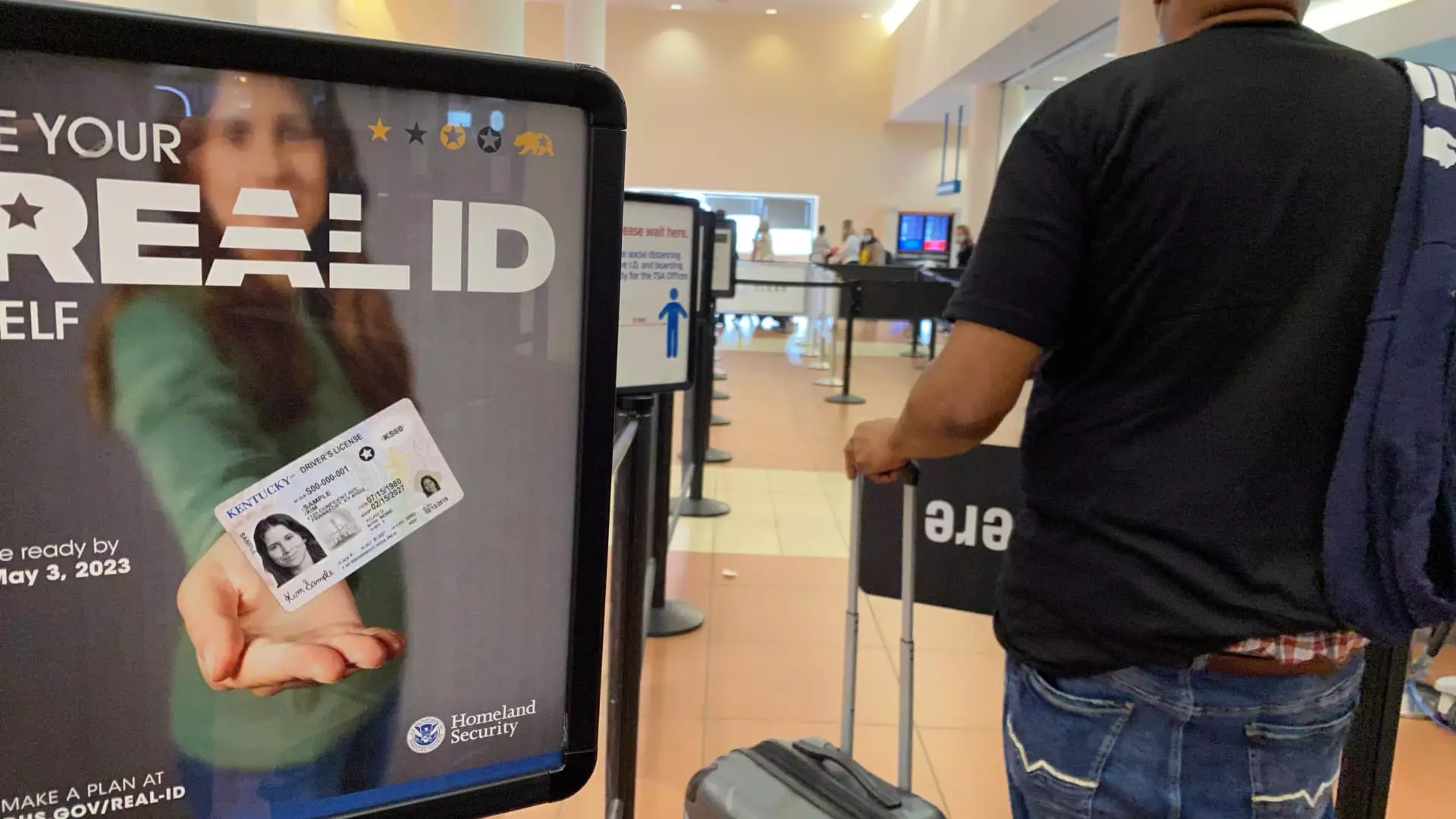With the federal government adamantly poised to enforce Real ID requirements at U.S. airports starting May 7, the reality is sinking in for travelers: confusion is rampant and preparation is scarce. For those who have been blissfully unaware, the Real ID initiative requires that Americans present a compliant form of identification—be it a driver’s license or passport—in order to pass through security for domestic flights. While the Transportation Security Administration (TSA) claims that 81% of airport-goers are already equipped with such identification, this figure masks a daunting truth that cannot be overlooked: countless individuals are still woefully unprepared.
In what seems to be a classic example of government inefficiency, the mounting pressure to obtain a Real ID has left many scrambling for appointments at motor vehicle departments—a task made increasingly difficult due to limited availability. This is not just a matter of bureaucratic oversight; it is a symptom of a larger issue: Americans are simply worn out from navigating through red tape and shifting deadlines. The continual pushbacks on the enforcement date—once a matter of accountability—have only led to confusion and distrust, and now, the impending deadline bears down like an unwanted storm cloud.
A Compliant Nation? The Numbers Say No
Sure, a headline-grabbing statistic of 81% compliance might paint an optimistic picture, but when we examine the reality, we find a patchwork of disillusionment across states. This compliance number neglects the vast swath of those caught in the invisible cracks—young adults, the elderly, and marginalized communities are at risk of being disproportionately affected by this mandate. Though the TSA has stipulated that alternatives exist, such as a passport or a permanent resident card, it only distracts from the real issue at hand: the fear and frustration of thousands left scrambling.
John Essig, the TSA’s federal security director for New York, has urged travelers to “make appointments now as quick as possible,” showcasing a sense of urgency that feels more like political theater than genuine assistance. It’s rich for officials to demand prompt action while making it virtually impossible to obtain this crucial documentation in a timely manner. The lack of options and resources available to citizens, coupled with the sheer scope of the chaos, begs the question: is this truly a fair and just system?
The Underlying Strategy: Security vs. Accessibility
The Real ID Act was originally framed as a national security measure born from the ashes of 9/11, a necessary response to the lax identification standards which allowed hijackers easy access to commercial flights. Armed with this historical context, one has to wonder if the end truly justifies the means. Are these requirements actually enhancing our safety or are they merely the government’s way of exerting control over its citizens?
While it is certainly imperative to ensure the safety of air travel, growing dependency on compliance comes at a steep cost—namely, accessibility. The TSA’s suggestion to arrive three hours ahead of time strikes as an arbitrary, ill-considered burden rather than an empowering action. The organization’s aim to “verify who passengers say they are” might seem well-intentioned, but it fundamentally overlooks the significant barriers that many face in obtaining proper identification in the first place.
Corporate Responsibility: Airlines and Their Role
Interestingly, airlines that have embraced the Real ID initiative, such as Frontier Airlines, have opted to further propagate the urgency of the requirement through website banners and direct customer emails. While these measures are aimed at informing travelers, they also reflect an insidious corporate trend that absolves companies from accountability. Rather than taking a stand against a convoluted government mandate, businesses are dutifully complicit, cashing in on the confusion.
When customers face potential delays and intimidation at airport security checkpoints, do airlines truly care about the passengers’ experience, or are they content to maintain the status quo for the sake of profit? This dichotomy between commerce and compassion raises an unsettling concern: in our quest for safety, have we inadvertently created an environment where customer distress is merely a collateral damage of corporate gain?
As we brace for May 7 and the imminent Real ID requirements, one thing becomes glaringly clear: Americans deserve better. In a system where freedom is supposed to be a birthright, we find ourselves weighed down by inadequacies that threaten to unravel our collective sense of security.


Leave a Reply